The latest version of Indonesia’s forest moratorium map is improved over its predecessor, say forestry analysts from Daemeter Consulting.
The map, released by the Ministry of Forestry (MoF), lays out which areas are excluded from logging under Indonesia’s two-year moratorium on new concessions. Civil society immediately criticized the initial map, which was published at a scae of 1:19,000,000, making it nearly useless for on-the-ground decision-making. The new “map” actually consists of 291 maps at a scale of 1:250,000.
Philip Wells and Gary Paoli of Daemeter say the new maps specifically include all protected areas and protected forest as part of the moratorium area, although they are not differentiated from areas shown as primary forest. The inclusion of all protected areas may help calm concerns that existing protected areas — especially in Sumatra — might be excluded from the moratorium.
Wells and Paoli were also able to decipher the basis for areas shown as primary forest in the new maps.
“The Primary Forest as shown appears to be forest classified by MoF using 2009 Landsat imagery to map primary minus areas where the MoF has granted forest concessions,” they write.
Wells and Paoli add that the concession map used to define areas exempted from the moratorium “appears to be an older version than the concession map used to the original map, with the consequence that some areas previously excluded now appear to be covered by the moratorium.”
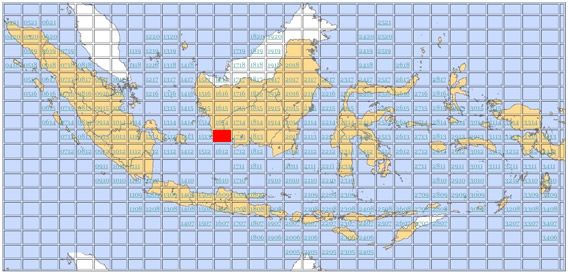 Indonesia-wide moratorium maps 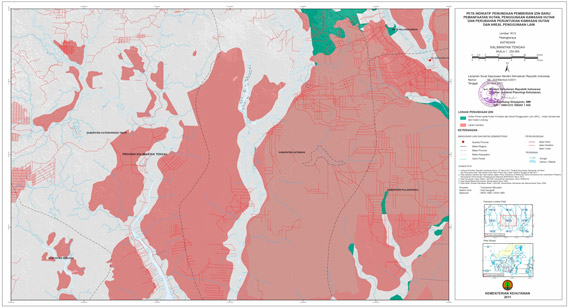 Map 1613 for Central Kalimantan. Full maps available at appgis.dephut.go.id/appgis/petamoratorium.html |
Peatlands remain undefined in the maps, but seem to include all areas of peat estimated to be deeper than 50 cm based on work by Wetlands International minus concessions granted prior to January 1, 2011.
Wells and Paoli note that the new maps remain “inconsistent” with the text of the Presidential Instruction that defined the moratorium.
“The text stipulates production of a map covering all primary forest and peatlands on which new licenses (with defined exemptions) should not be issued and various actions by government institutions should be undertaken to improve management and governance,” they write. “By excluding from the moratorium map specified forest concessions, MoF in effect places those concessions outside the scope of enhanced management and governance required by the Presidential Instruction, even though such concession areas may contain primary forest and peatlands.”
“Also inconsistent with the PI, the MoF maps protected areas and protected forest as part of the moratorium without differentiating these areas from primary forest outside protected areas. This introduces ambiguity and unnecessary widening to the scope of the moratorium, given that such protected areas are already subject to restrictions in excess of those required by the moratorium.”
Wells and Paoli conclude that the higher resolution maps “enable the moratorium to become operational, but would benefit substantially from depicting all peatlands and primary forest explicitly, with protected areas… and concession licenses exempted from the moratorium shown separately.” They say a “systematic and transparent review over all areas” would improve planning across forest areas.
Preliminary Observations on the Indonesian Ministry of Forestry Decree SK.323/Menhut-II/2011 and Indicative Maps Concerning the Suspension of New Licenses for Forest and Peatland Utilisation [PDF].
Related articles
REDD calculator and mapping tool for Indonesia launched
(07/13/2011) Researchers have launched a new tool to help policy-makers, NGOs, and landowners evaluate the potential benefits and costs of Indonesia’s reducing emissions from deforestation and degradation (REDD+) program at provincial and district levels.
Is the Ministry of Forestry undermining Indonesia’s logging moratorium?
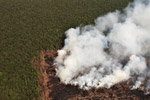
(06/28/2011) Indonesia’s Ministry of Forestry is already undermining the moratorium on new forestry concessions on peatlands and in primary forest areas, alleges a new report from Greenomics-Indonesia. The report, The Toothless Moratorium, claims that a new decree from the Ministry of Forestry converts 81,490 hectares of forest protected under the moratorium into logging areas. The area affected is larger than Singapore.
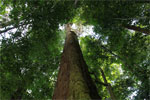
(06/27/2011) A raft of new studies show that protecting Southeast Asia’s forests could provide an enormous economic lift for Southeast Asia. Indeed, the studies suggest, forest conservation, sustainable forestry, and agricultural improvements, along with investments in clean energy, could spur the rise of regional “Green Tiger” economies whose development levels surpass even those achieved during the boom years of the 1990’s. The studies provide a striking rebuttal to palm oil and timber industries’ claims that deforestation is necessary for the region’s growth.
(06/17/2011) World Resource Institute’s summary of key elements, and unanswered questions, in Indonesia’s recent moratorium on new forest permits.
Indonesia’s moratorium map has errors, says government
(06/03/2011) The map underpinning Indonesia’s moratorium on new concessions in primary forests and peatlands is “inaccurate”, an Indonesian forestry official told The Jakarta Post.
Interview with Indonesian climate official on rainforest logging moratorium
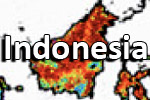
(06/03/2011) In May, Indonesia President Susilo Bambang Yudhoyono issued a presidential instruction laying out the specifications for a two-year moratorium on new concessions in primary forests and peatlands. The moratorium aims to create a window for Indonesia to enact reforms needed to slow deforestation and forest degradation under its Letter of Intent with Norway, which would pay the Southeast Asian nation up to a billion dollars for protecting forests.
Lack of clarity complicates Indonesia’s logging moratorium
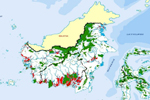
(05/27/2011) Lack of clarity makes it difficult to assess whether Indonesia’s moratorium on new logging concessions in primary forest areas and peatlands will actually reduce greenhouse gas emissions from deforestation, according to a new comprehensive assessment of the instruction issued last week by Indonesian President Susilo Bambang Yudhoyono. The analysis, conducted by Philip Wells and Gary Paoli of Indonesia-based Daemeter Consulting, concludes that while the moratorium is “potentially a powerful instrument” for achieving the Indonesian president’s goals of 7 percent annual growth and a 26 percent reduction in greenhouse gas emissions from a projected 2020 baseline, the language of the moratorium leaves significant areas open for interpretation, potentially offering loopholes for developers.
Indonesia’s moratorium disappoints environmentalists
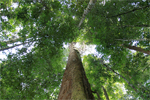
(05/20/2011) The moratorium on permits for new concessions in primary rainforests and peatlands will have a limited impact in reducing deforestation in Indonesia, say environmentalists who have reviewed the instruction released today by Indonesian President Susilo Bambang Yudhoyono. The moratorium, which took effect January 1, 2011, but had yet to be defined until today’s presidential decree, aims to slow Indonesia’s deforestation rate, which is among the highest in the world. Indonesia agreed to establish the moratorium as part of its reducing emissions from deforestation and degradation (REDD) agreement with Norway. Under the pact, Norway will provide up to a billion dollars in funds contingent on Indonesia’s success in curtailing destruction of carbon-dense forests and peatlands.

Is Indonesia losing its most valuable assets?
(05/16/2011) Deep in the rainforests of Malaysian Borneo in the late 1980s, researchers made an incredible discovery: the bark of a species of peat swamp tree yielded an extract with potent anti-HIV activity. An anti-HIV drug made from the compound is now nearing clinical trials. It could be worth hundreds of millions of dollars a year and help improve the lives of millions of people. This story is significant for Indonesia because its forests house a similar species. In fact, Indonesia’s forests probably contain many other potentially valuable species, although our understanding of these is poor. Given Indonesia’s biological richness — Indonesia has the highest number of plant and animal species of any country on the planet — shouldn’t policymakers and businesses be giving priority to protecting and understanding rainforests, peatlands, mountains, coral reefs, and mangrove ecosystems, rather than destroying them for commodities?
Will Indonesia’s big REDD rainforest deal work?
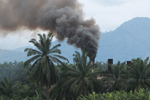
(12/28/2010) Flying in a plane over the Indonesian half of the island of New Guinea, rainforest stretches like a sea of green, broken only by rugged mountain ranges and winding rivers. The broccoli-like canopy shows little sign of human influence. But as you near Jayapura, the provincial capital of Papua, the tree cover becomes patchier—a sign of logging—and red scars from mining appear before giving way to the monotonous dark green of oil palm plantations and finally grasslands and urban areas. The scene is not unique to Indonesian New Guinea; it has been repeated across the world’s largest archipelago for decades, partly a consequence of agricultural expansion by small farmers, but increasingly a product of extractive industries, especially the logging, plantation, and mining sectors. Papua, in fact, is Indonesia’s last frontier and therefore represents two diverging options for the country’s development path: continued deforestation and degradation of forests under a business-as-usual approach or a shift toward a fundamentally different and unproven model based on greater transparency and careful stewardship of its forest resources.